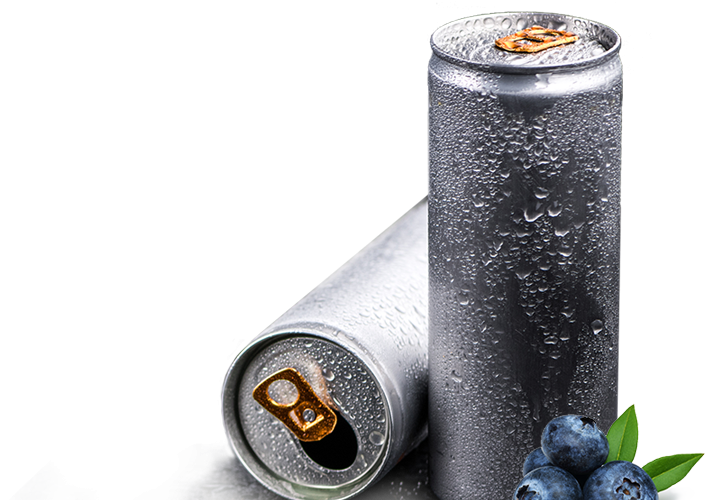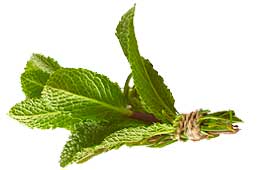
For some age groups, nutrients gotten from mere diet might not be sufficient to keep the body running at a normal pace, hence the advent of nutritional supplements.
The sole reason for supplements is to help individuals achieve their daily nutrient intake and also help improve their health status as the case may be. Supplements are there to augment whatever lapses possible as diet alone might not be able to provide adequate amounts of a particular nutrient.
Nutritional supplements are consumables and the come either as capsules, pills or tablets. They are either the combination of a different nutrients (protein, fat, vitamins and minerals, carbohydrates, fiber) and compounds or just one nutrient that is produced by the body.
A supplement is mostly needed to help balance a particular nutrient in the body especially if there is a condition that requires more amount of that nutrient than the body can produce or mere diet can provide. It is not intended to substitute a healthy diet.
Research has it that the global market for nutritional and dietary supplements recorded over US$104 billion sales as at 2013. These sales was cut across globally among geriatric populations, pregnant women and the rising urban population.
The major types of supplements used are multivitamins, calcium supplements, fatty acids or fish oils, and mineral supplements.
CLASSES OF SUPPLEMENTS
The National Agency of Medicines suggests that dietary supplements be grouped according to their intended uses:
1. Food supplements as products which supplements the usual diet
2. Food stuff for particular uses which due to their special composition are targeted at certain groups e.g for special people with disordered metabolism, for infants from 2-5 months, for special sets of people with special physiological condition
Supplements also, can be classified according to their origin, texture, or in the form in which they are available. They could also be grouped as follows
i. Vitamins and minerals; in a combination form as multivitamin or multiminerals.
ii. Protein supplements; in form of liquid or tablets and not combined with other macronutrients.
iii. Different compositions of amino acids
iv. Meal surrogates in form of wafers, biscuits or powder
v. Carbohydrate supplement with/without electrolytes
vi. Supplements with natural anabolic effects
vii. Activator supplements of growth and other hormones
viii. Herbs etc.
Class Example Contents
Activator Amino acids Growth hormones and other hormones
Carbohydrate Dextrose Some vitamins and electrolytes
Herbs Ginseng, saw palmetto Amino acid and other plant sources
Minerals Selenium, zinc, multimineral tablets Contains only minerals
Multivitamins and minerals Vitamin D, calcium supplement Contains a mixture of vitamins and minerals
Oil supplements Cod liver oil, primrose oil Oil base with vitamins and minerals
Vitamins B complex, vitamin C (high doses) Contains only vitamins
Examples of Botanical supplements and their uses
Common Name Uses
1. Gingko biloba -Memory improvement, lowering blood pressure
2. Ginseng -overall health, anti-stress
3. Saw palmetto- Treating of bening prostatic hypertrophy
4. St Johns wort- Antidepressant
5. Valerian- Reducing anxiety
6. Green tea extract- Antioxidant
Dietary Reference Intakes for Nutrients
The Dietary Reference Intakes (DRIs) are developed to help define nutrient requirements for healthy populations. These references are derivatives from scientific studies and researches to provide ranges for optimum to maximum indicators for good health, reduce the risk of chronic diseases and even the outcome of excessive intake on the health status of individuals.
RDA (recommended dietary allowance) simply is the average amount of a nutrient for a particular age/gender group that is thought to be sufficient to meet their nutrient requirement and bodily functionality in a day to about (97%-98%).
For an individual to be deficient of a nutrient, it means he/she is getting an inadequate supply of a particular nutrient(s). this would normally happen as a result of impaired digestion, absorption, transport or metabolism of nutrients. When these occurs, illness or diseases arises; then comes in nutritional supplements to the rescue.
WHEN IS THE BEST TIME TO SUPPLEMENT?
Consuming whole grains, vegetables, fruits, legumes, nuts and fishes might not just be sufficient for particular groups. Certain amounts of extra nutrients are needed to ensure they have reduced risk of disease and mortality rates.
Most times, these supplements are more effective when used for as preventive measures.
Groups with increased requirements:
1. Pregnancy and breastfeeding
– folic acid: pregnant and breastfeeding women would require a folic acid supplement in order to help their infants brain and spinal cords develop adequately. Their bodily supply wont be enough to sustain both mother and child, so supplementation is key at this period. In addition to a diet of folate-rich food sources which include okro, liver, cabbage, spinach, beans etc, a pregnant woman should take at least 400mcg of folate every day.
– calcium: (intake from dietary sources like milk, yoghurt, cheese, leafy vegetables, almonds is recommended) 1300 mg/day for women of 18 years; 1000 mg/day for those of 19 years and above. This is to help babies build healthy bones and teeth.
– vitamin D: 600 units/day; consider 2000mg for women in very extreme weather conditions (especially northerners )
– iron: . Iron is important in pregnancy to help create red blood cells and prevent anemia for both mother and child.
Recommended dosage is 27 mg/day. To prevent gestational anemia in non-anemic women, monitored supplementation at 120mg weekly is adviced ; given at the 1st day of the week in 2 divided doses
2. Aged people
• people from 60 and above always struggle with poor oral health, depression, dementia and social isolation. This might deter the intake of nutrient by this group and so supplementation is needed. Especially for nutrients like Vitamin B12 to avoid malabsorption and deficiency.
Conditions with risk of malabsorption:
• People that has undergone bariatric surgery: vitamins A, D, K, B1, B12, vitamin C and folic acid; calcium, copper, iron, selenium and zinc. Patients require routine supplementation with vitamins and minerals for 2 years or more, with doses higher than those provided by nonprescription supplements
• People diagnosed with several types of gastrointestinal diseases known to cause malabsorption or maldigestion (e.g., lactose intolerance, gluten-sensitive enteropathy, food allergies): fat-soluble vitamins, vitamin B12, vitamin K, zinc, iron, calcium
• People who might have swallowing, chewing or dental problems.
ADVANTAGES AND LIMITATIONS
There are quite a number of advantages attached to supplements as provide large content of nutrients in small volumes, specialized sporting needs, absence of unnecessary accompanying substances as fats, cholesterol and purines.
But for some reasons, some individuals tend to abuse these supplements by increasing the dosage or frequency which could result in a drop in the effectiveness of supplements. When this occurs frequently, the human body is forced to work harder to eliminate excesses.
An overdose of these supplements could lead to organ failure, hypervitaminosis, and endocrine disorders.
There are factors that lead to the appearance of side effects due to the toxicity of dietary supplements and they include: (i) dosage (ii) duration of intake (iii)special chemical properties found in supplements and their interactions with other foods (iv) the individuals weight (v) individual capacity.
SAFETY AND RISK LEVELS
These supplements have active ingredients that might be harmful to the body if not taken as prescribed by a physician, you should look out for reactions on your body as soon as possible and report to a healthcare center.
Some supplements can increase bleeding time if taken before surgery, while some can alter your response to anesthesia. Supplements have a tendency of reacting with some drugs in very detrimental ways and they include:
• Vitamin K can reduce the ability of the blood thinner warfarin to prevent blood from clotting.
• St. John’s wort can speed the breakdown of many medicines and reduce their effectiveness (including some antidepressants, birth control pills, heart medications, anti-HIV medications, and transplant drugs).
• Antioxidant supplements, such as vitamins C and E, might reduce the effectiveness of some types of cancer chemotherapy.
Metformin used by diabetics can reduce the absorption of vitamin B12
SOURCES:
1. McCormick DB. Vitamin/mineral supplements: of questionable benefit for the general population. Nutr Rev 2010;68(4):207-13.
2. Maher LK, Escott-Stump S. Krause’s Food, Nutrition, and Diet Therapy. 11th ed. USA: Elsevier, 2004. Vitamins. In: Kleinman RE, editor. Pediatric Nutrition Handbook. 5th ed. Elk Grove Village, IL: American Academy of Pediatrics, 2004.
3. Fraga CG (2009) Plant phenolics and human health: biochemistry, nutrition and pharmacology, vol 1. Wiley, Hoboken (more…)







 Taste: Sweet and pungent flavour. Works well in
Taste: Sweet and pungent flavour. Works well in  Taste: Sweet and peppery.
Taste: Sweet and peppery.
 Taste: Chillis vary quite a lot in strength, so add a little at first and taste your dish. Cayenne is a specific type of chilli.
Taste: Chillis vary quite a lot in strength, so add a little at first and taste your dish. Cayenne is a specific type of chilli. Taste: Mostly used in
Taste: Mostly used in  Taste: Onion-like but less powerful.
Taste: Onion-like but less powerful. Taste: Coriander leaves have a distinct earthy and lemony flavour, while coriander seeds have a warm, spicy, citrus flavour when crushed.
Taste: Coriander leaves have a distinct earthy and lemony flavour, while coriander seeds have a warm, spicy, citrus flavour when crushed. Taste: Dill has a strong taste, often compared to fennel, star anise and celery.
Taste: Dill has a strong taste, often compared to fennel, star anise and celery. Taste: Earthy and smoky.
Taste: Earthy and smoky. Taste: Peppery, lemony and slightly sweet, with a sharp aroma.
Taste: Peppery, lemony and slightly sweet, with a sharp aroma. Taste: Oregano has a warm, aromatic, slightly bitter taste and a potent aroma.
Taste: Oregano has a warm, aromatic, slightly bitter taste and a potent aroma. Taste: Paprika is milder and sweeter than cayenne pepper.
Taste: Paprika is milder and sweeter than cayenne pepper.
 Taste: From the Mediterranean coast, sage is like rosemary, with more lemon and eucalyptus.
Taste: From the Mediterranean coast, sage is like rosemary, with more lemon and eucalyptus. Taste: Adds a distinctive, bittersweet liquorice-like flavour to foods, and has an aroma similar to star anise.
Taste: Adds a distinctive, bittersweet liquorice-like flavour to foods, and has an aroma similar to star anise.
 Taste: Has a distinctive yellow colour so is sometimes used as a cheaper alternative to saffron, although it tastes quite different.
Taste: Has a distinctive yellow colour so is sometimes used as a cheaper alternative to saffron, although it tastes quite different.